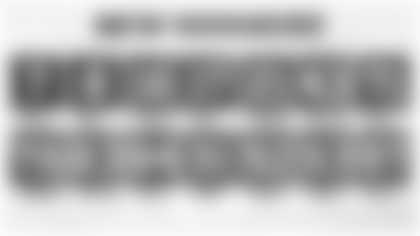Like most NFL general managers, the Jets' Mike Tannenbaum set out to fill as many of his team's needs as he could in the free agency signing period. In fact, being reasonably familiar with Mike T.'s way of doing things, it's safe to say he did more than try. He made it a priority, and it has shown in the moves the Jets have made thus far this off-season.
As the clock wound down on their wild-card playoff game in Foxboro, the needs list was already in place. The defense needed a pass rusher off the edge and a shutdown corner who could play in coverage behind the team's blitz packages. And in the 3-4 scheme, there is always a need for more linebackers, particularly players who are athletic enough to rush the passer or drop in coverage and also read and react to the run.
Though RB Leon Washington was a mild success story in 2006, it was clear the team needed a featured back who could step into the large, empty shoes of Curtis Martin. The Jets also needed a third weapon in the passing game, someone who could work the middle of the field and give Chad Pennington a reliable target in the intermediate passing game. Finally, they needed to continue looking for upgrades along the O-line.
Well, they kicked things off the right way, making perhaps the best deal of the winter with the trade for RB Thomas Jones. He is a tough north-south runner who can also be a slasher. He has excellent quickness and is light on his feet. He has good vision and will attack the seam and good lateral quickness at the second level. He has a second gear once in the open field and has the ability to score down near the goal line. Jones has rushed for over 2,500 yards and 15 TDs the last two seasons, and he has also improved his receiving skills, giving Pennington an added weapon out of the backfield. He instantly makes the Jets a better team.
Tannenbaum and head coach Eric Mangini have also worked hard to find a pass-rushing DE who fits the mold of the 3-4 defense. Andre Wadsworth and Michael Haynes are both former first-round picks with outstanding athleticism and natural pass rush ability, but Haynes didn't fit the attacking 4-3 style of the Bears and Saints, and Wadsworth has had knee problems. However, both have the size (6'4", 280) and experience to contribute as situational pass rushers in the Jets' scheme. So does former Dolphin David Bowens, who has 26 career sacks, 18 in the last three seasons as a part-time player, and former Cowboy Kenyon Coleman, who stands 6'5", 295, and had a career-high four sacks last season.
The Jets also re-signed RT Anthony Clement, who showed improvement toward the end of last season but can still be a liability in pass protection at times, and CB Hank Poteat, who is a reliable depth player, is familiar with the system from his days in New England and actually started seven games last season.
But those two signings, while important, are mostly stopgap measures, so fans can expect the team to address both areas in the draft. Speaking of which, let's see what the April selection meeting will have to offer. With four picks on Day One, expect the Green & White to go heavy on defense.
In Round 1, the Jets would be thrilled to have Miami TE Greg Olsen fall to them, but this year's version of Jeremy Shockey seems to be climbing up the board week by week. However, there is a wealth of CBs, who should come off the board in the two opening rounds. We expect the faller to be Texas corner Aaron Ross. He's big at 6'1", 198, and has the speed (4.4 in the 40) and athleticism to turn and run in man coverage. He's also adept at reading routes, which will make him a capable defender in zone or Cover-2 schemes. Physically, he's the full package, but he lacks playing experience as he had to wait his turn behind all that talent in Austin. Still, he would give the Jets a shutdown corner opposite Andre Dyson.
With two picks in Round 2, the Jets could find some value in the likes of TE Zach Miller of Arizona State or another cornerback like Pittsburgh's Darelle Revis. But look for the team to address the heart of its defense. Nebraska OLB Stewart Bradley is tough and competitive and moves well for a 260-pounder. He can make plays in the open field and is a sure tackler, meaning he can play in coverage. He doesn't have elite speed, but he's a productive pass rusher and plays with excellent technique. He's a smart, instinctive player who always seems to be in the right spot, and though he lacks the elite athleticism to be a big-time playmaker, he is a solid player who can play inside or outside in the 3-4.
Another player who could be available near the end of Round 2 is Delaware TE Ben Patrick. With Olsen and Miller likely gone, Patrick would be a good value in this spot. He played his college ball at Duke, then played for the Blue Hens as a grad student last season. Delaware throws to the TE a good deal, so Patrick has a good understanding of how to find space against zone coverage, can read the blitz and cut off his routes, and also has the speed to get vertical on the seam. He's a smart player with very good hands and is big, strong and tough. He will competes for balls, makes tough catches in traffic and can take a hit.
In Round 3 the Jets could come back to the offense again. Iowa G Mike Jones is an intriguing prospect. He's 6'5", 313, and has the frame to add even more weight. He lacks athleticism, which will cause him to slide down most boards, but he is another player in the Mangini mold: tough, competitive and smart. He reads stunts and blitzes well and does a good job of picking up defenders in short areas. Look for the Jets, if they take Jones, to groom him as the eventual replacement for Pete Kendall.














